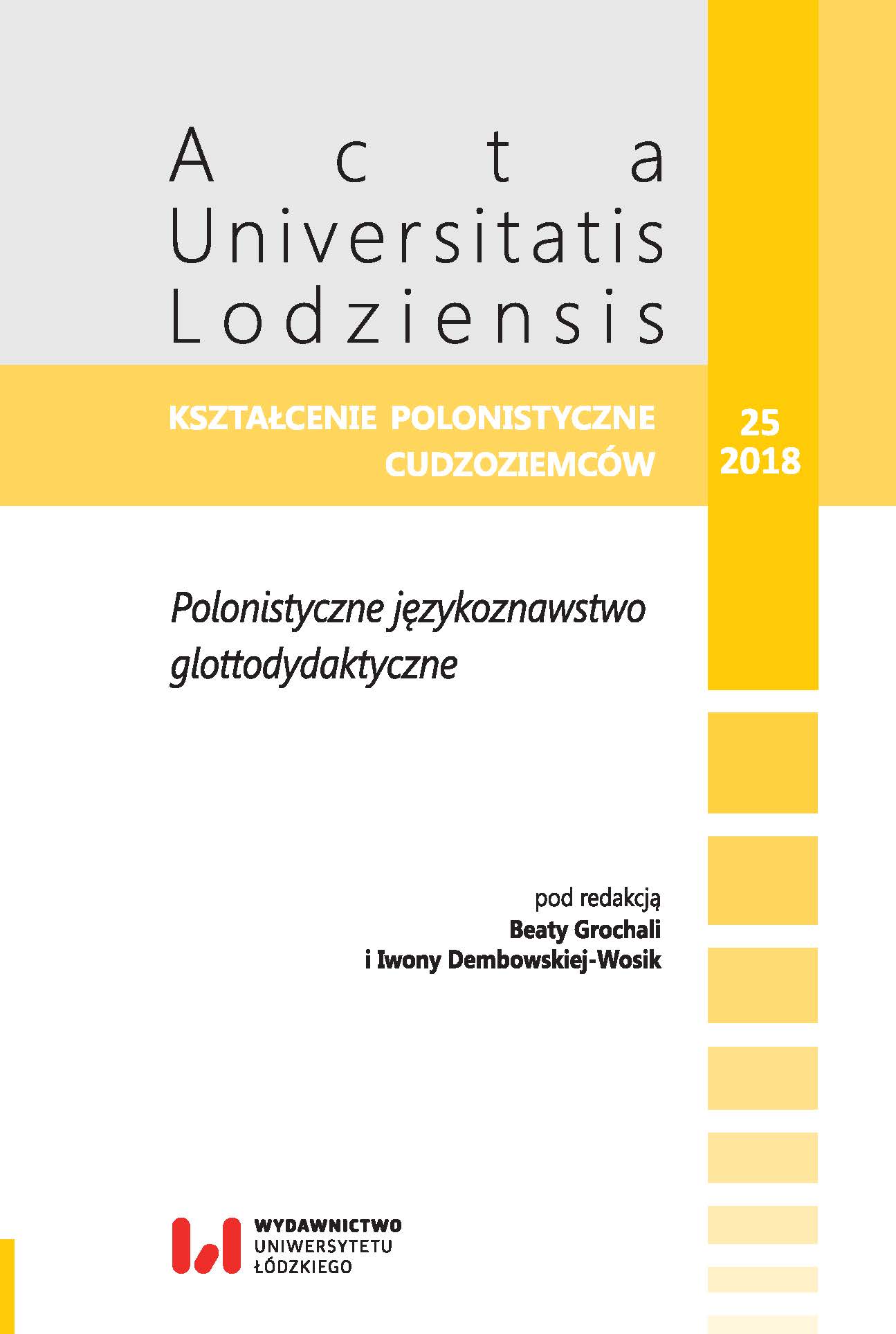How to count in Polish – linguacultural aspects of the descriptive and historical grammar of numerals
DOI:
https://doi.org/10.18778/0860-6587.25.07Keywords:
linguaculture, grammar of numerals, cultural glottodidactics, teaching, anthropometryAbstract
The article is dedicated to the issue of how to teach the grammar of numerals to foreigners. The article exposes the problem of a dual way of expressing plurality in sentence structures. The author provides the grammatical explanation of the issue provided, in which the nominality of the numerals (lower or higher than 5) determines the nominative or genitive sentence structure. Together with the neurolinguistics interpretation of this mechanism, the text provides also linguacultural reflections which constitute its essence. An anthropomethric explanation and the history of the formation of the linguistic principle are illustrated. Additionally, the text is a particular proposal of an interdisciplinary narrative in teaching the Polish language.
References
Arct M., 1917, Słownik staropolski, Kraków.
Google Scholar
Arct M., 1919, Słownik polszczyzny XVI wieku, Kraków.
Google Scholar
Bańkowski A., 2000, Etymologiczny słownik języka polskiego, t. 1–2, Warszawa.
Google Scholar
Brückner A., 1927, Słownik etymologiczny języka polskiego, Kraków.
Google Scholar
Długosz-Kurczabowa K., 2008, Wielki słownik etymologiczno-historyczny języka polskiego, Warszawa.
Google Scholar
Długosz-Kurczabowa K., Dubisz S., 1998, Gramatyka historyczna języka polskiego, Warszawa.
Google Scholar
Garncarek P., 2009, Nie licz na liczebnik, Warszawa.
Google Scholar
Siuciak M., 2008, Kształtowanie się kategorii gramatycznej liczebnika w języku polskim, Katowice.
Google Scholar
Downloads
Published
How to Cite
Issue
Section
License

This work is licensed under a Creative Commons Attribution-NonCommercial-NoDerivatives 4.0 International License.










